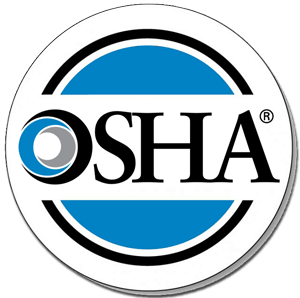Would Your Maintenance Shop Pass an OSHA Inspection?
edit
He says that his office recently got a complaint from one of your technicians, and as a result he’s there to inspect your turf equipment maintenance shop. Which of the following thoughts goes through your head?
- “I’m glad we just reviewed OSHA inspection protocol at our last monthly safety meeting. We should be in good shape.”
- “Oh, crap. We haven’t reviewed our safety procedures in at least a year. We’re in deep trouble.”
- “What’s OSHA?”
If either of the last two thoughts listed above comes closest to describing your imagined reaction to the proposed scenario, now might be a good time to review your shop’s safety procedures to make sure you are in compliance with OSHA guidelines. Fines for violating those guidelines can be quite steep, running in the thousands or tens of thousands of dollars, so any time you spend on compliance now will be time well spent. Here are some tips about how to make sure your maintenance shop can pass an OSHA inspection with flying colors.
Know the rules
The first step in following the rules, of course, is to know the rules. The workplace safety standards created by the Occupational Safety and Health Administration (OSHA) can be found in Title 29 of the Code of Federal Regulations, which is posted online (great for some light reading). If you don’t have the time to read through the entire section, you might want to start with the top ten most frequently cited standards for 2014. Making sure that you aren’t falling short in any of the areas listed there is probably a good start.
Also, be aware of what safety-related records you need to keep, especially when it comes to employee illness and injury. Some employers and industries are exempt from OSHA’s record-keeping requirements-check their website for the most up-to-date list.
Make safety a part of the culture
Having safety-related policies and procedures written down in a manual is one thing, but making sure your employees follow those policies is another. If an OSHA inspector sees that only lip service is paid to safety protocol, it will likely result in a citation. Enforce your policies and penalize employees who don’t follow them so that everyone knows that safety is a top priority.
Also, hold regular meetings and training sessions to discuss workplace safety. Ensure you have the appropriate safety equipment, whether that is helmets or safety platforms, and it is vital that employees are trained in how to use them. They may need a full range of protective clothing, and if this becomes damaged, you will need the help of Uniform destruction services carried out by phs Besafe or somewhere similar. Also, encourage employees to report safety concerns to managers, whether it is a wet patch on the floor or a broken wheel on one of the mobile access ladders. Often, an OSHA inspection is triggered by either an accident resulting in injuries or a report from an employee. Making safety part of your corporate culture reduces the likelihood of either of those things happening. Alongside preventative measures, there are other steps that employees can take for peace of mind that the impacts of an accident can be counteracted. For example, disability insurance is a type of insurance that can provide income in the event a worker is unable to perform their work and earn money due to a disability sustained as a result of an accident. Not everyone understands how disability insurance can help, however. Consequently, you can discover more about disability insurance, including the answers to important questions such as ‘is long term disability insurance tax deductible?’ by doing some research online and speaking to disability insurance specialists.
Prepare for an OSHA inspection
If you follow all the rules and make safety a priority in your maintenance shop, you may very well never get inspected by OSHA. However, just in case you should prepare for an inspection and make sure you are aware of your rights. If your shop is inspected, cooperate with the inspector but don’t volunteer information that isn’t requested. Also, make sure that you get copies of any pictures taken during the inspection, as these can be used as evidence to support citations. Finally, be aware that anything you or your employees say to the inspector can be used against you later.
In summary, as long as you know and comply with the workplace safety laws that apply to your business, you should be in good shape. The companies who are most likely to get fined for violations are the ones who show a willful contempt for the law, or who try and deliberately cover up violations. If you and your employees make workplace safety a priority, you have little to fear from an OSHA inspection. Review our list of best resources for turf professionals for additional help.
